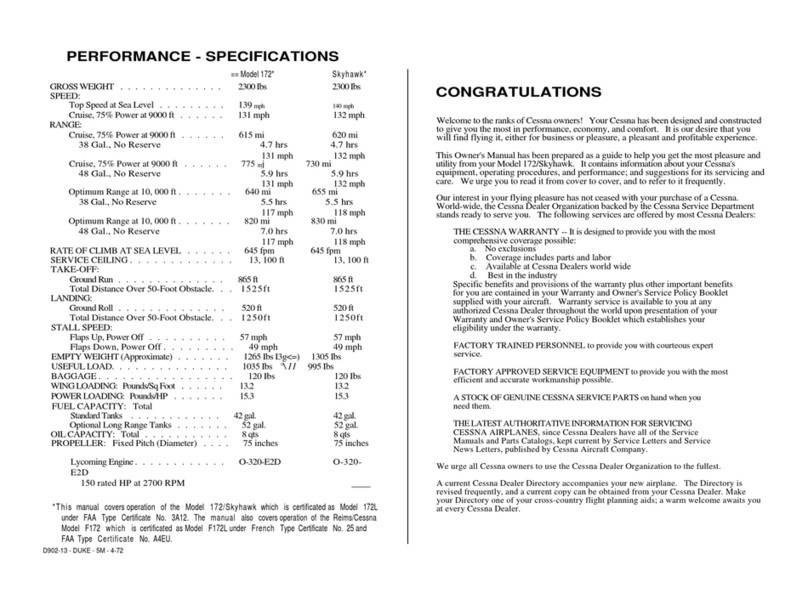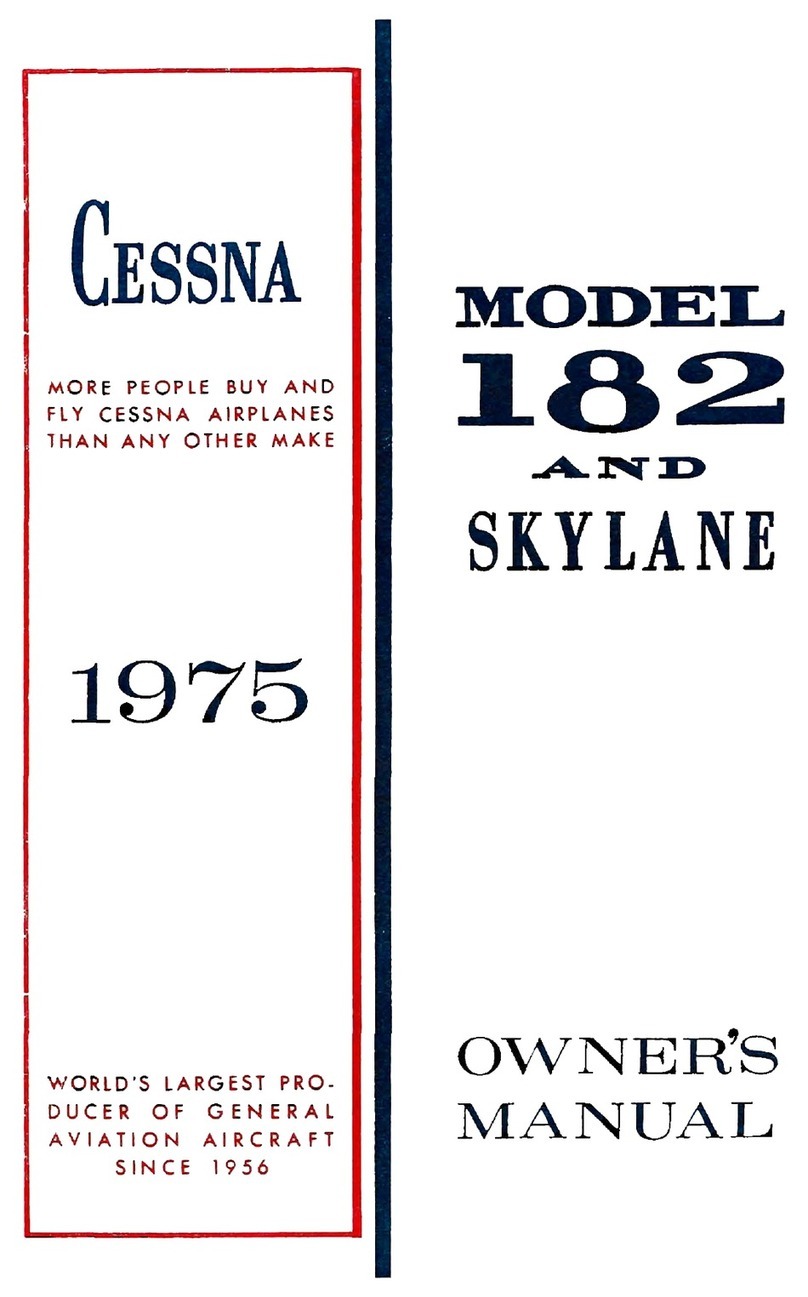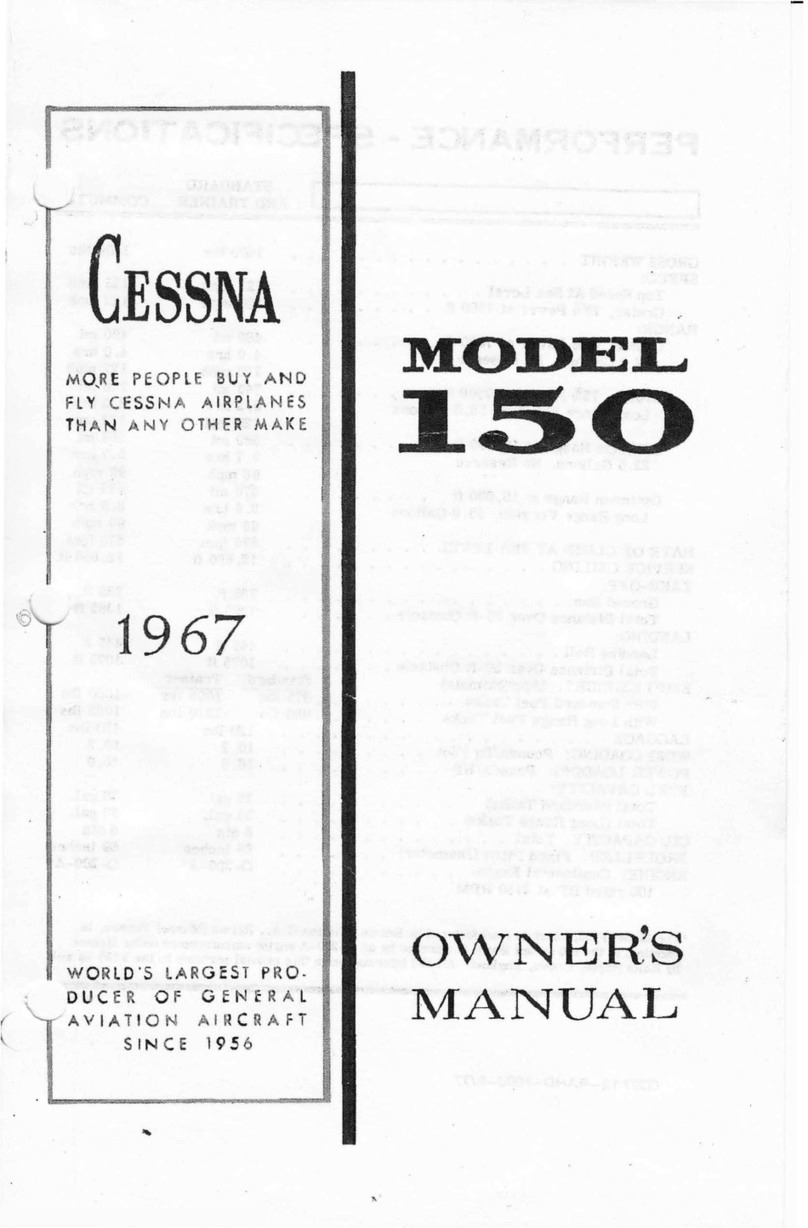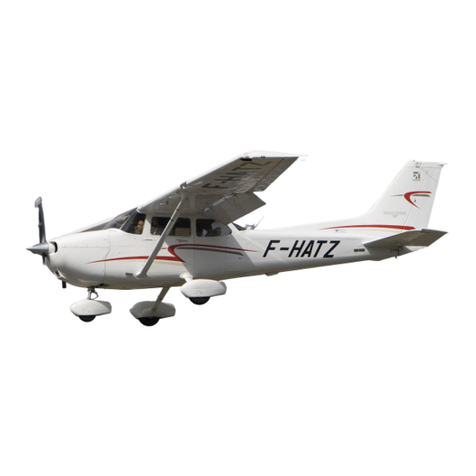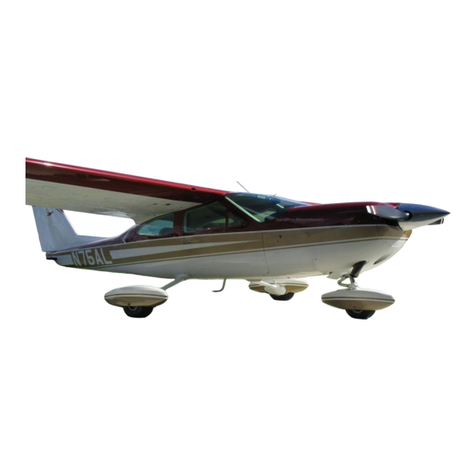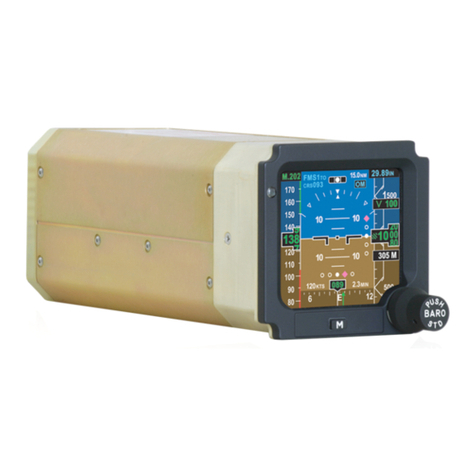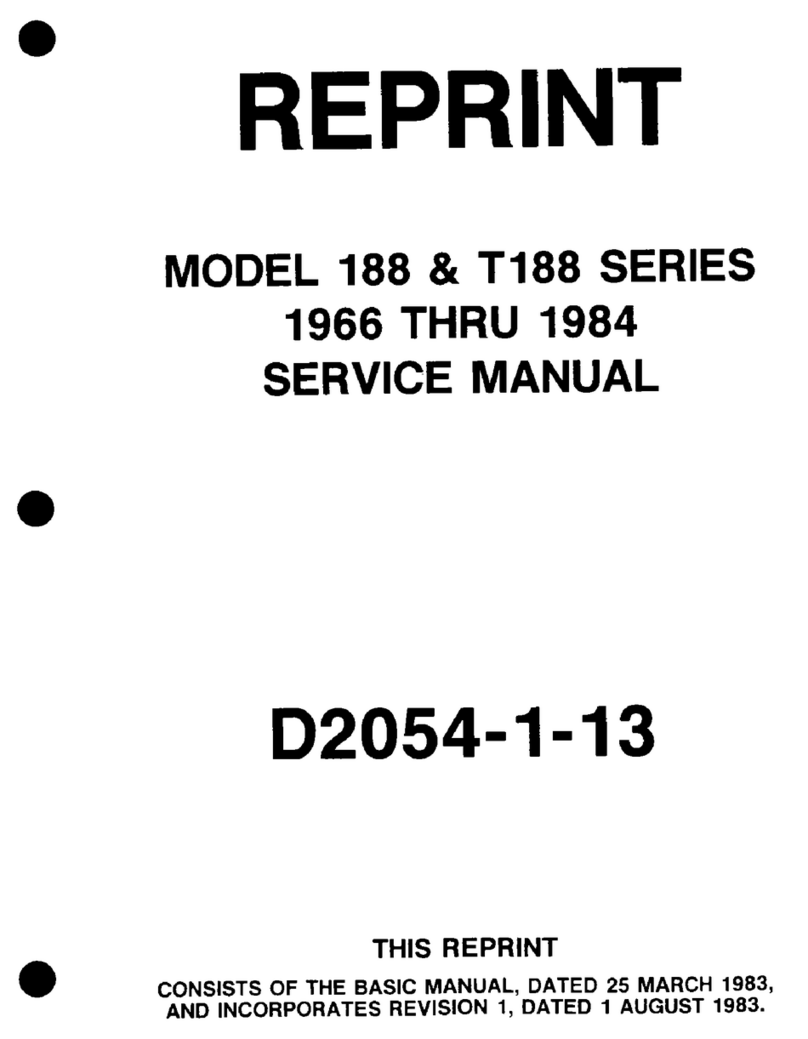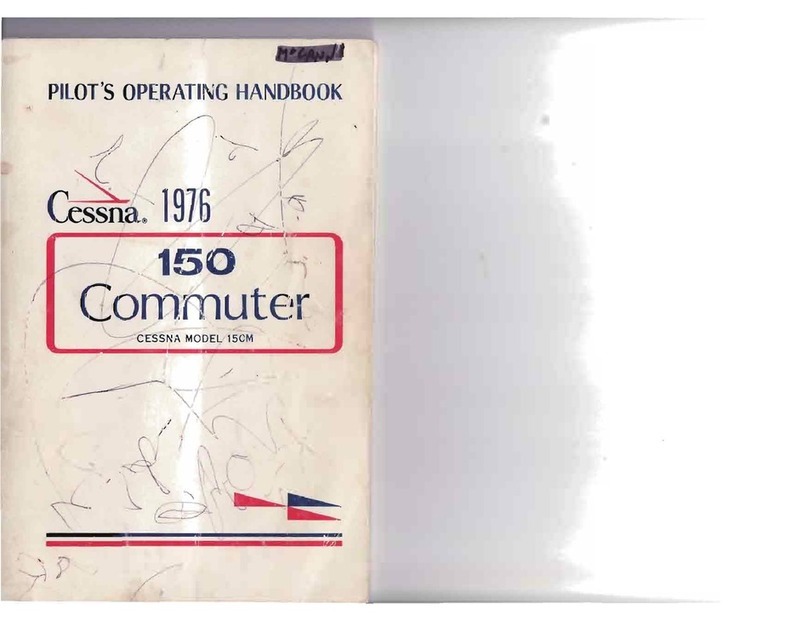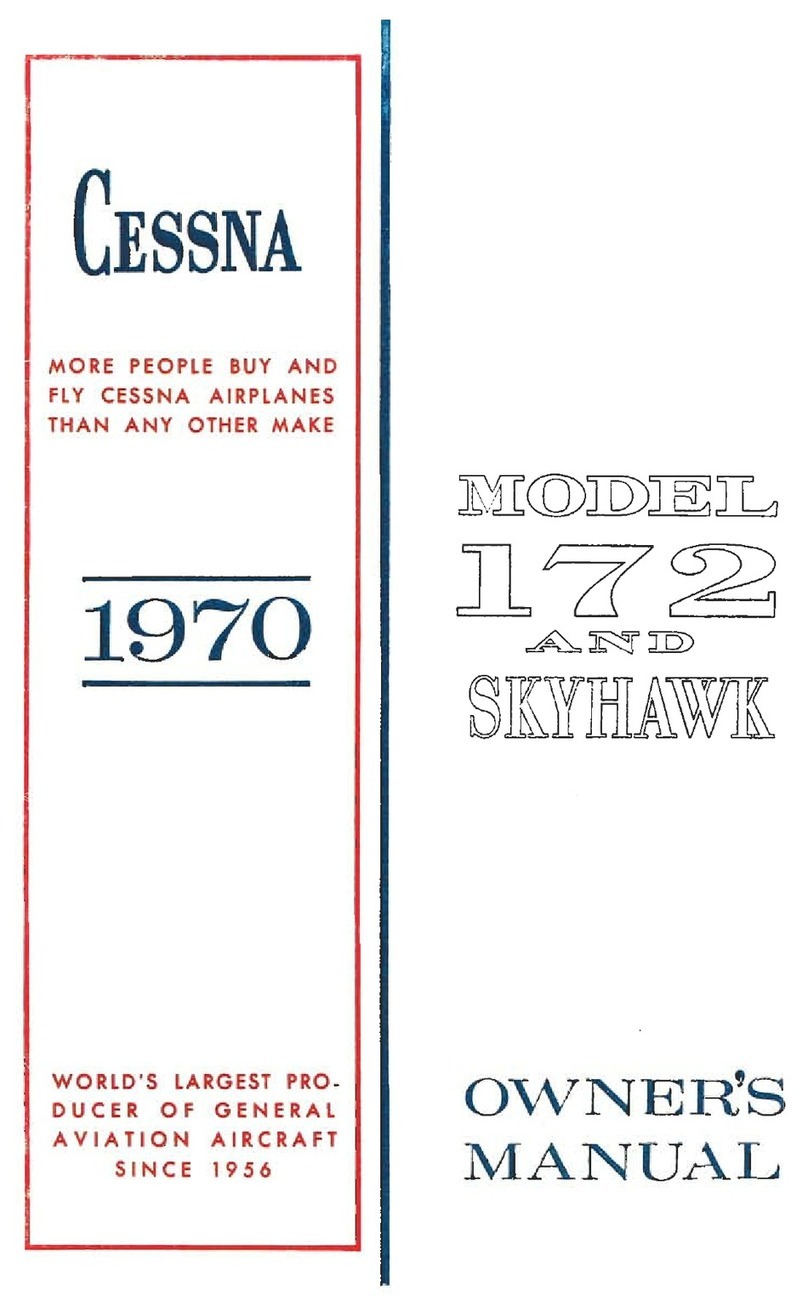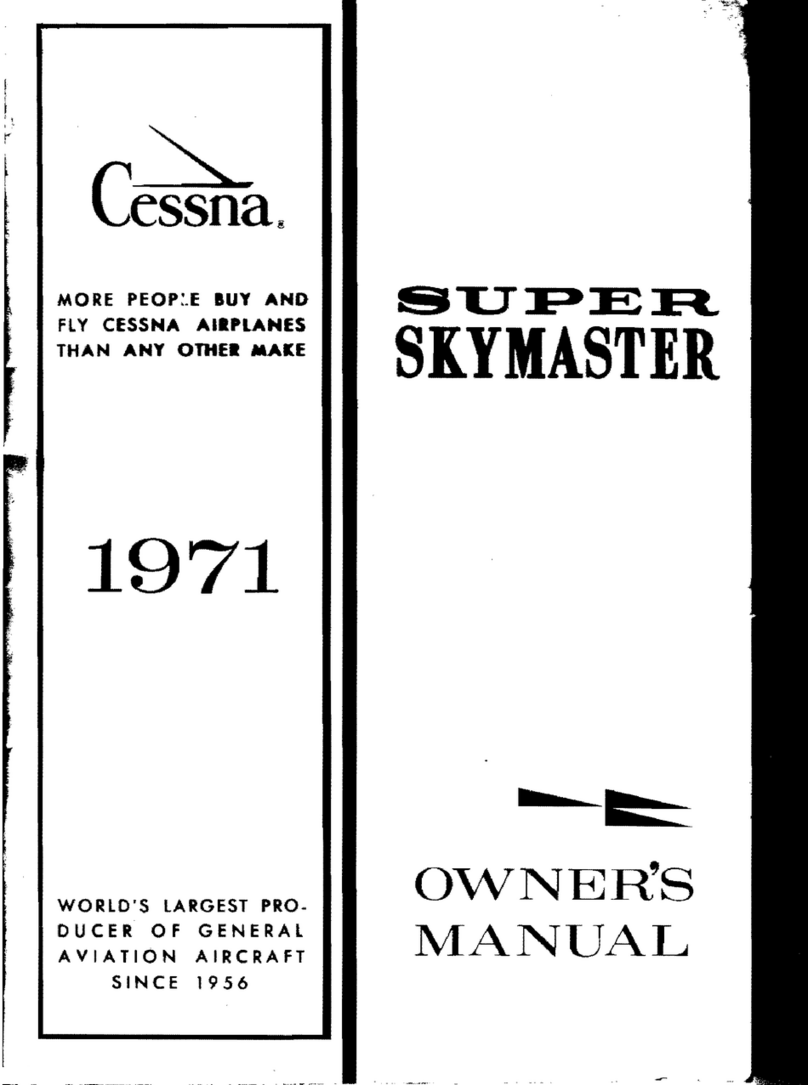
SECTION
1
GENERAL DESCRIPTION
TABLE OF CONTENTS Page
GENERAL DESCRIPTION
..........
1-
1
Aircraft Specifications
.........
1-
1
Model FR172-Series
..........
1-1
Stations
................
1-
1
Description
............
1-1
Torque Values
.............
1-
1
1-1.
GENERAL DESCRIPTION.
1-2. MODEL 172-SERIES.
1-3. DESCRIPTION. Cessna Model 172 Series air-
craft, described in this manual, are high-wing mono-
planes of all-metal, semimonocoque construction.
Thexe aircraft are equipped with a fixed tricycle land-
ing gear with tubular spring-steel main gear struts.
The steerable nose gear
is
equipped with an air/hy-
draulic fluid shock strut. Four-place seating
is
stan-
dard, and a double-width, fold-up auxiliary rear seat
may be installed as optional equipment. All are
powered by four-cylinder, horizontally opposed, air-
cooled Lycoming "Blue Streak" engines. Each of
the engines drives are all-metal, fixed-pitch propeller.
Model 172-Series aircraft feature rear side windows,
a "wrap-around" rear window and a swept-back fin
and rudder.
1-4. AIRCRAFT SPECIFICATIONS. Leading parti-
culars of these aircraft, with dimensions based on
gross weight, are given in figure
1-1.
If these di-
mensions areused for constructing a hangar or com-
puting clearances, remember that such factors as
nose gear strut inflation, tire pressures, tire sizes
and load distribution may result in some dimensions
that are considerably different from those listed.
1-5. STATIONS. Station diagrams are shown in fig-
ures 1-2 to assist in locating equipment when a
written description
is
inadequate or impractical.
1-6.
TORQUE VALUES. A chart of recommended
nut torque values
is
shown in figure 1-3. These tor-
que values are recommended for all installation pro-
cedures contained in this manual, except where other
values are stipulated. They are not to be used for
checking tightness of installed parts during service.
http://www.ioffer.com/selling/userfriendlycds
http://stores.ebay.com/UserFriendlyCDs


